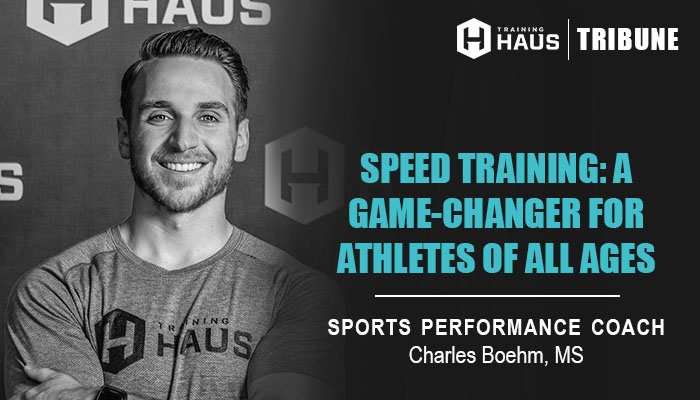
Speed & Agility Training: A Game-Changer for Athletes of All Ages
As athletes, training our bodies to be stronger, faster, and more resilient is incredibly important. However, moving and training with poor or inefficient technique can put a ceiling on our performance!
This article will detail several of top speed and agility drills to get you moving quicker and more efficiently, while gaining a competitive edge on your opponents.
As you work through these exercises, be sure to check out the sets and reps associated with each drill. And don’t forget to watch the quick videos for additional guidance!
LINEAR ACCELERATION – FIRST STEP EXPLOSION
Why linear acceleration is important:
- For athletes in team sports, acceleration comes into play in many scenarios. Commonly, you will need to accelerate quickly to create space between you and the opposition. Or, conversely, to close space down as quickly as you can.
Common issues:
- Athletes begin their run too vertical, causing them to elongate the time it takes to reach top speed.
- Overstriding – or heel-striking – causes the athlete to experience a braking force, slowing down their acceleration on every step.
Drill for linear acceleration: Half-Kneeling Start Sprints (click to watch)
Repetitions: 3-6 reps starting with each foot forward
Keys to success:
- Lean forward onto the front foot. Most of your weight should be on the ball of the foot.
- Stay low! Keep your torso down and drive out from the front foot.
- Be careful not to overstride.
DECELERATION AND CHANGE OF DIRECTION (COD)
When it comes to decelerating and changing direction, one of the most important concepts to understand is your body positioning and your body awareness. Putting yourself into a position to stop, cut, and re-accelerate your body can often be the difference between a good athlete and an amazing athlete.
Why deceleration and COD is so important:
- In team sports, your max speed is only one piece of the puzzle. Much more often you are sprinting short distances, stopping, and re-accelerating in a new direction. Less time is spent running at top speed.
- Improving your COD will make you a more versatile and hard-to-predict athlete, making you more of a threat to the opposing team.
- Learning how to efficiently absorb momentum can help to reduce an athlete’s risk for injury.
Common issues:
- Not utilizing your joints and muscles to absorb force to stop your bodies movement.
- Failing to set-up your body in a way to explosively get out of your stops.
- Taking unnecessary steps when approaching a cut can reduce your ability to utilize a strong reflexive explosion. It can also give away your intentions to opposing players.
Drill for improving deceleration and COD: 4 Corner Box Drill (click to watch)
Repetitions: Perform 3 laps (each direction) around the box at a jogging pace, making a full stop on each corner. Then, perform 3 laps (each direction) around the box at a moderate pace, taking no pauses at each cone. Finally, perform 3 laps (each direction) around the box at near full speed, taking no pauses at each cone.
Keys to success:
- Get low on each corner and utilize your hip and knee joints to absorb your force.
- Take only 2 steps to fully decelerate your body. With the second step, slightly turn your foot toward the next cone.
- Explode off of your front foot as you approach the next cone.
FOOT AND ANKLE STRENGTHENING
When it comes to speed and agility training, an often-overlooked area is the foot and ankle joint. In running, cutting, stopping, starting, and everything in between, the foot is the only part of your body that is in contact with the ground. Training the foot and ankle to be resilient and efficient can reduce your risk for injury all the way up the body. Sadly, foot and ankle training is commonly a missing piece in many athletes’ training!
Why foot and ankle training is crucially important:
- When running a maximal sprint, the force put into the ground can be equivalent to several times your body weight.
- In sport, your foot strikes, pivots, and maneuvers with the ground in an enormous variety of angles.
Common issues:
- Modern shoes can lead to decreases in foot function, strength, and mobility over time if not counteracted with strong training methods. Because of this, undue stress can be demanded of the knees, hips, and lower back to make up for a weak feet and ankles.
- Athletes with little to no foot and ankle training commonly have poor ankle stiffness, causing them to have poor acceleration or cutting efficiency.
Exercise for Foot and Ankle strengthening:
- Spring Ankle Isometrics – 1 (click to watch)
- Spring Ankle Isometrics – 2 (click to watch)
- Spring Ankle Isometrics – 3 (click to watch)
- Spring Ankle Isometrics – 4 (click to watch)
Repetitions: Perform 1 set of 60 seconds in each position on each leg.
Keys to success:
- Utilize a post or wall in front of you to aid in balance.
- Actively squeeze your hips, quads and calves to maintain stiffness throughout the duration of the exercise.
- Have only the ball of your foot on the platform.
Act fast by downloading our FREE, two-week Speed and Agility program on the HAUS Performance app, and start getting faster today.

